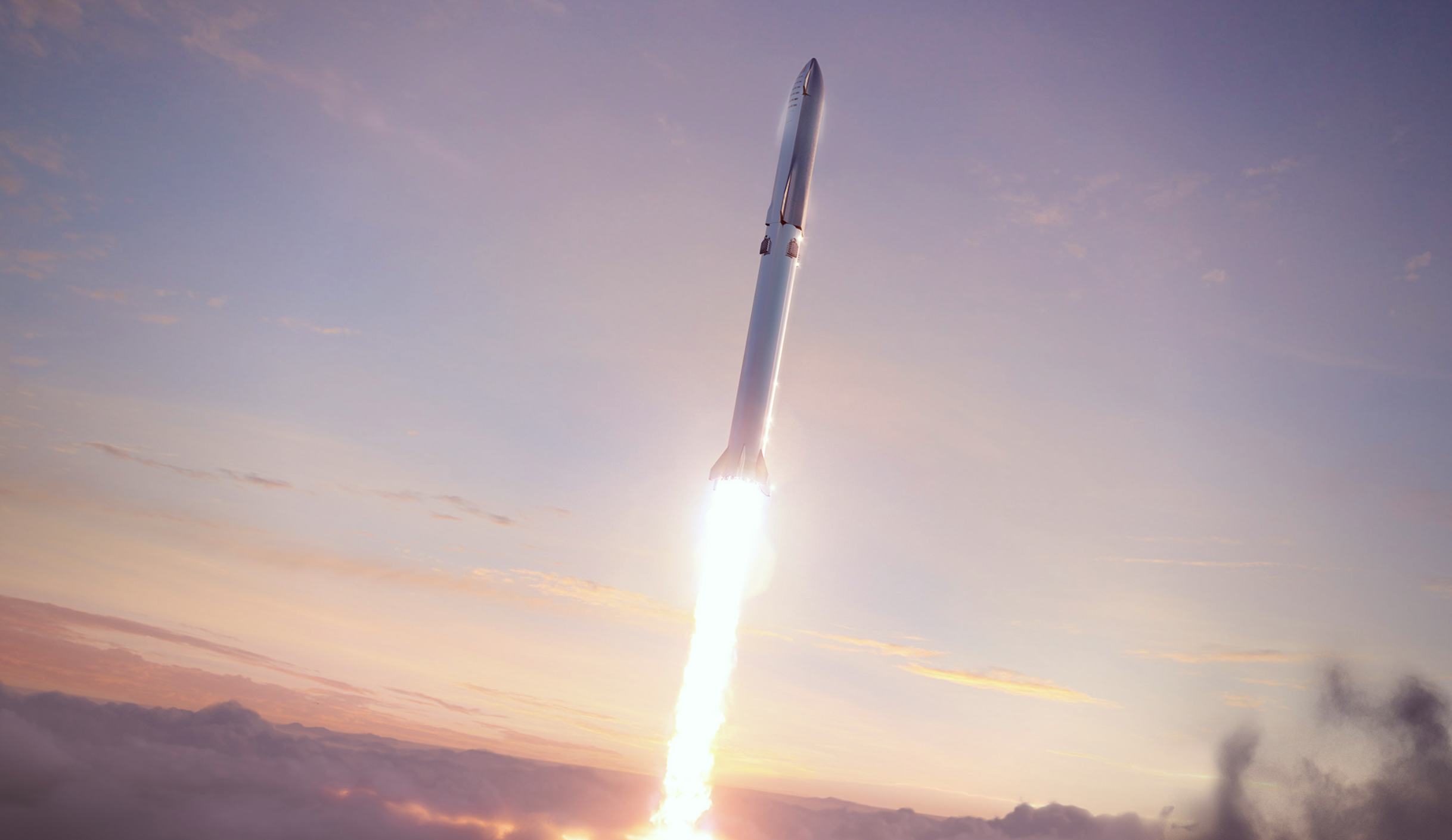
Starship, SpaceX's rocket designed to send humans to Mars and beyond, could reach all-new heights next week.
On Tuesday, Space.com reported that the Starship "SN8" prototype completed a static test fire at 6:23 p.m. Eastern at SpaceX's Texas facility. This was the fourth such test for the prototype — it is a procedure held before a launch in which the engines are fired but the vehicle is held in place.
The successful fire is another step toward Starship's biggest "hop test" yet.
SUBSCRIBE TO MUSK READS+, A PREMIUM NEWSLETTER THAT COVERS THE WORLDS OF ELON MUSK, SPACEX, TESLA, AND EVERYTHING BETWEEN.
"Good Starship SN8 static fire!" SpaceX CEO Elon Musk wrote on Twitter after the test.
"Aiming for first 15km / ~50k ft altitude flight next week. Goals are to test 3 engine ascent, body flaps, transition from main to header tanks & landing flip."
Musk's tweets confirm SpaceX hopes to make its most ambitious jump yet next week. The Starship has held a series of "hop tests," over the last twelve months, gradually reaching higher altitudes over time. In August 2019, a miniaturized version of the ship, dubbed "Starhopper," reached 500 feet altitude. A full-size prototype reached the same height in August 2020.
A several-kilometer flight has been on Musk's wish list for years. In October 2017, back when the Starship was still known as "BFR," Musk said that the company aimed to hold "short hops of a few hundred kilometers altitude and lateral distance." In August 2019, Musk repeated the objective and said SpaceX planned to do a 20-kilometer flight with the first prototype, which was unveiled in September.
It may have taken years to get here, but Musk seems unsure about the flight's success. In response to a question about whether he thinks the ship will land in one piece, Musk wrote on Twitter: "lot of things need to go right, so maybe 1/3 chance," before adding: "but that’s why we have SN 9 & SN10."
Watch the "SN8" static firing below:
SpaceX regularly tweaks prototypes. The "SN5" prototype which flew in August lacked a number of cosmetic features, including a nosecone, meaning it looked more like a farm silo flying into the air than a rocket. For SN9 and SN10, fans can expect "many small improvements, but overall similar," according to Musk. The "wiring is more robust, engines are more mature, nosecone is sealed better, etc.," he added.
"Major upgrades are slated for SN15," Musk wrote.
The success of these flights could dictate the schedule for coming missions. SpaceX plans to use Starship to send humans to Mars in the mid-2020s — the first steps toward establishing a city on Mars by 2050. The fully-reusable ship would use liquid oxygen and methane as its fuel, meaning astronauts could fly to Mars, refuel using the planet's resources, and either return home or venture out further.
When asked about SpaceX's plans to test these refueling technologies, including portable fueling plants, Musk wrote the team would "maybe start on that a year from now," adding it "depends on how Starship progress goes."
The Inverse analysis — It's perhaps not surprising Musk isn't confident about getting the ship back in one piece. After Virgin Orbit failed to reach orbit in May 2020, Musk revealed SpaceX took four attempts to reach orbit with the Falcon 1 rocket.
But the new flight time does highlight how the team's previous expectations have shifted. At the unveiling of the "Mk.1" ship in September 2019, Musk claimed the prototype could reach 20 kilometers in one or two months. Perhaps one or two years will prove more accurate.
It's taken time to reach this point, but the end result — a fully-reusable ship that can send 100 people or 150 tons into space at a time — could have a profound impact on the space industry.
THE STARSHIP’S JOURNEY, SUMMARIZED
- November 2018 – BFR, first announced in September 2017, gets renamed to Starship.
- December 2018 – Musk confirms the new ship has switched to stainless steel.
- January 2019 – Shortened “Starhopper” prototype unveiled and Musk explains the switch to steel.
- February 2019 – Raptor engine beats a long-standing rocket record.
- April 2019 – Starhopper completes a tethered “hop.”
- July 2019 – Starhopper launches 20 meters (67 feet).
- August 2019 – Starhopper launches 150 meters (500 feet).
- September 2019 – Starship Mk.1 full-size prototype unveiled.
- May 2020 – Starship SN4 full-size prototype completes a static test fire.
- August 2020 – Starship SN5 launches 150 meters (500 feet).
- October 2020 – Starship SN8 completes the first triple-Raptor static fire.







